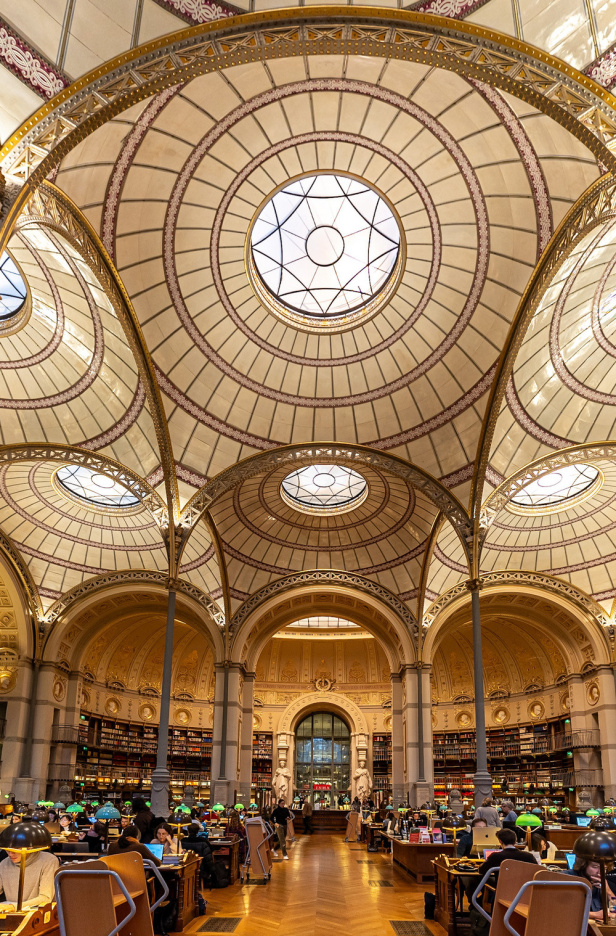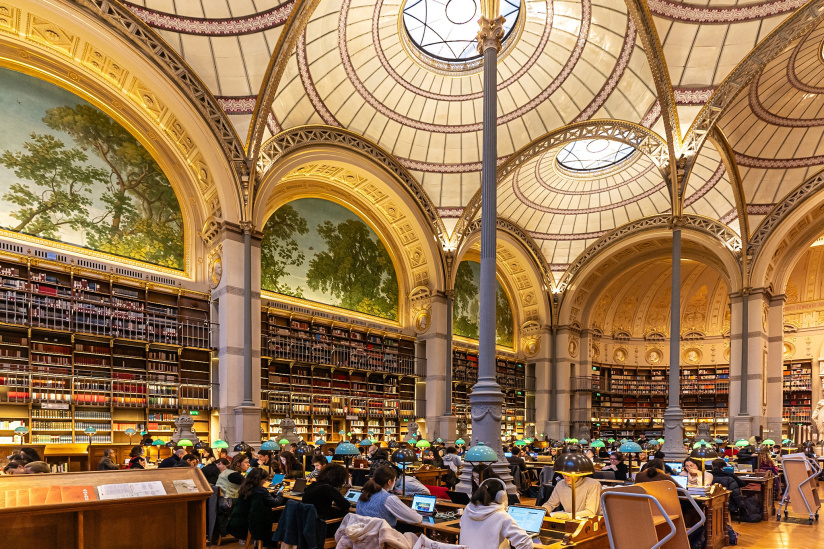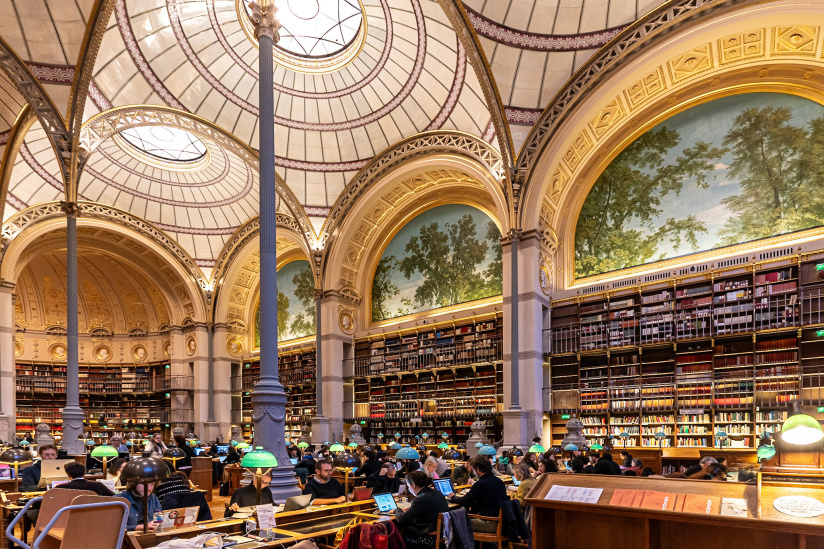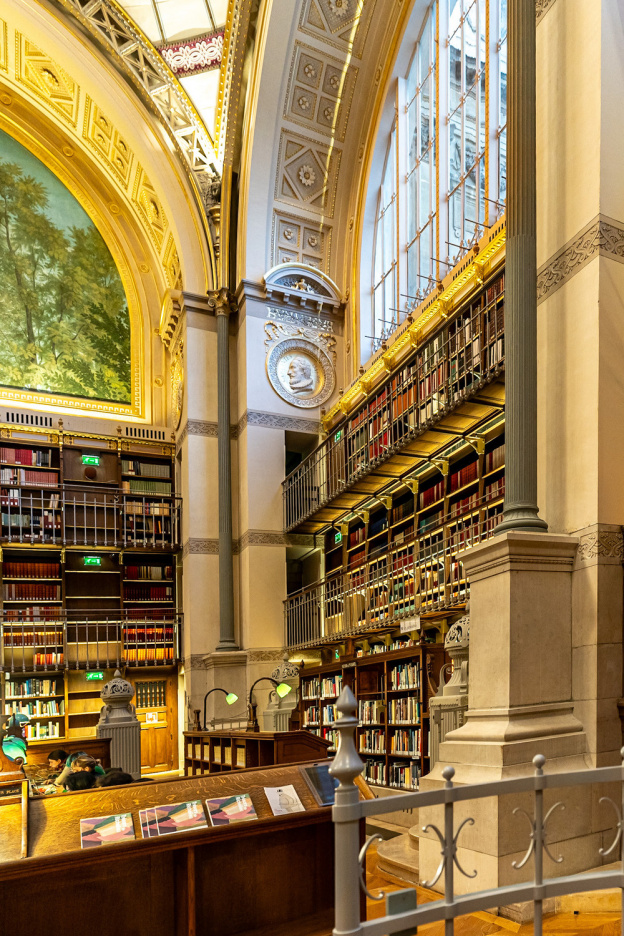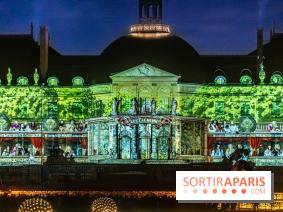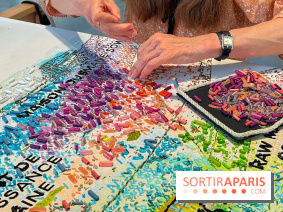The Salle Labrouste, located on the rue Vivienne in Paris, within the Richelieu site, is an architectural treasure trove, inspired by unexpected forms that take their cue from period dresses. Part of theINHA (Institut National d'Histoire de l'Art), the library is the fruit of the genius of 19th-century architect Henri Labrouste. Today, after its reopening in 2016, it continues to fascinate with its unique aesthetics and rich history.
It's essential not to confuse the Salle Labrouste with the oval room at the Bibliothèque Nationale de France (BNF) Richelieu. Although both are located in the same building, they house different institutions. In fact, the Richelieu site is home to several prestigious entities: in addition to the BNF, it also houses theÉcole Nationale des Chartes and INHA, the Institut National d'Histoire de l'Art. INHA now occupies the famous Salle Labrouste, named in honor of its architect Henri Labrouste, as well as the central store.
On February 16, 1854, Emperor Napoleon III entrusted Henri Labrouste, an architect already renowned for his success with the Sainte-Geneviève library opened three years earlier, with the impressive task of constructing a building for the imperial library. Labrouste (1801-1875) was entrusted with this grandiose and complex mission after the death of Louis Visconti (1791-1853), his predecessor in this project.
Henri Labrouste launched an ambitious modernization project on a site made up of successive buildings inherited from the 17th and 18th centuries. His concept for the Imperial Library was centered around the huge reading room for printed matter, which today bears his name.
In this undertaking, just as he had done for the Sainte-Geneviève library, Labrouste emphasized his penchant for light, the use of metal, and architectural decoration inspired by antiquity. This orientation towards light was essential in a place framed by narrow streets, especially at a time when artificial lighting was avoided due to the risk of fire.
The discovery of this room begins with the vestibule, a transitional space between the bustle of the street and the studious calm of the reading room. The architecture of the Salle Labrouste is surprising: contrary to its outward appearance, it is square-shaped, with 9 domes on the ceiling, supported by metal columns reminiscent of tree trunks. This architectural choice creates a luminous, soothing atmosphere, conducive to reading and reflection.
Located at 2 rue Vivienne in the 2nd arrondissement, the Salle Labrouste is more than a library. It is a work of art in its own right, blending ancient, Byzantine and Baroque influences with modern materials. Cast-iron columns, 10 meters high, support iron arches and domes pierced by oculi, allowing light to flood the space. At 1155 m2, it accommodates 342 seated and 70 standing readers, providing an ideal setting for research and study.
But did you know that the shapes of the Salle Labrouste are inspired by dresses? Indeed, the hooped cages of crinolines, very much in vogue in the 1850s, influenced the structure of the cupolas. This surprising anecdote reveals Labrouste's ability to integrate elements of fashion into his architecture, creating a unique link between clothing and building. Did you know thatAlexandre Desgoffe, author of the magnificent frescoes in the Salle Labrouste and the Bibliothèque Sainte-Geneviève, was a pupil of the famous painter Ingres?
The Salle Labrouste is not simply a place for storing books, but a living space, with 550,000 printed books, 7,000 periodical titles and much more. It's a place where history and art meet, where every element, from Alexandre Desgoffe's frescoes to the silently perched owls, tells a story.
For lovers of architecture, history and culture, a visit to the Salle Labrouste is a must. The Salle Labrouste is primarily a research library and is not open to the general public for daily use. However, it is accessible for special events such as the European Heritage Days or conferences as part of the "L'art entre les lignes" cycle. For academics, researchers and professionals, visits can be organized by appointment by contacting the INHA at info-bibliotheque@inha.fr. Please note, however, that it is possible to access the entrance and take photos in a designated area.
Located close to the Palais-Royal-Musée du Louvre, Bourse and Pyramides metro stations, the Salle Labrouste is easily accessible. Whether you're a researcher, a student, or simply curious, the Salle Labrouste awaits to reveal its secrets and immerse you in the fascinating world of art history and architecture.
For a unique cultural experience combining history, art and architecture, the Salle Labrouste is a must-see in Paris. Although access is limited, the opportunities to discover it remain precious and enriching.
Location
Salle Labrouste - Bibliothèque de l'INHA - Institut national d'histoire de l'art
2 Rue Vivienne
75002 Paris 2
Prices
Free
Official website
www.inha.fr
More information
Library opening hours are as follows: Monday: 2:00 pm - 7:30 pm Tuesday to Friday: 9:00 am - 7:30 pm Saturday: 9:00 am - 6:30 pm

